Big Sugar
Flight 2 - NEFAR launch 11/12/05
Rick Creamer - Steve Ghioto - Jimmy Yawn
Good news: the motor worked!
More good news: The airframe worked!
Even more good news: The rocket came back!
Do you get the feeling that I'm setting you up for some bad news? You are so clever!
Bad news: The
shock cord broke, causing the airframe to come down in two pieces.
One of them didn't have a parachute. The aft section landed hard
and lost a fin, tube is cracked, and another fin looks like it might be
fractured too.
More bad news: The altimeter didn't work, so we did not get an altitude reading
Even worse bad news: The camcorder did not capture any video.
Last bit of bad news, (I hope!): In a feat of stupidity, I put my
camcorder in "pause" mode instead of "record" and did a really good job
of not filming the flight.
Fortunately, others were on-task and captured it.
Using a Nikon digital SLR (drool) set to capture 9 frames per second,
the stills are almost as good as a movie, and far better resolution.
Here is the flight sequence:
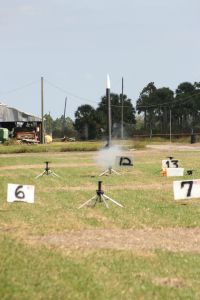
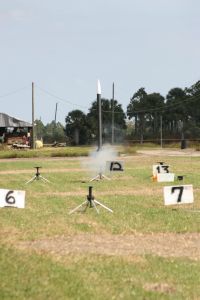
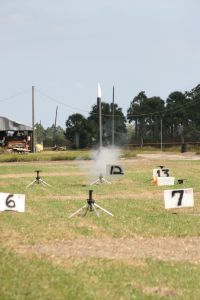
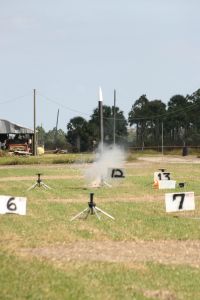
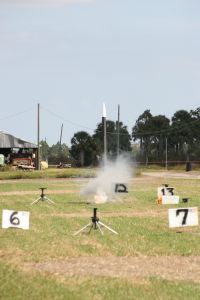
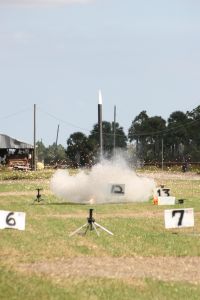
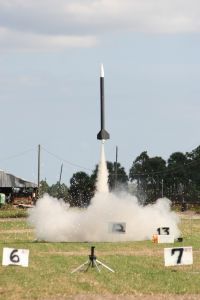
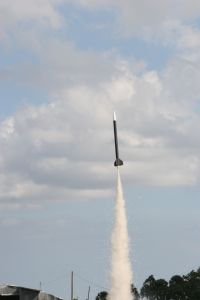
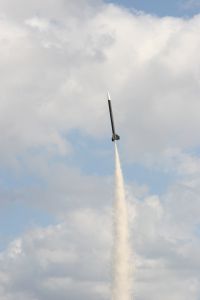
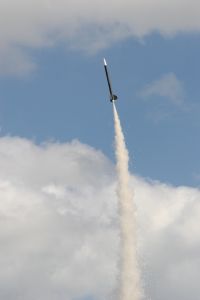
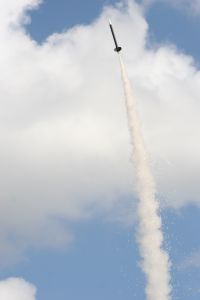
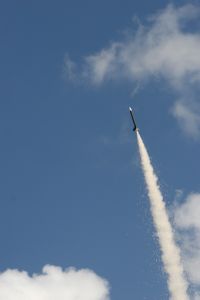
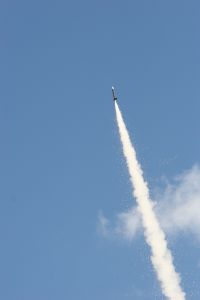
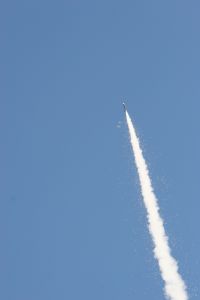
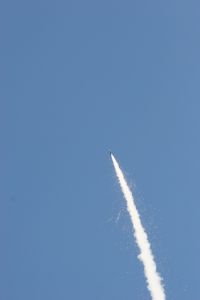
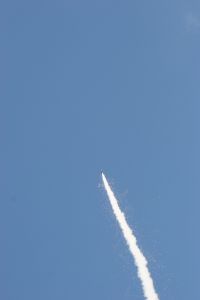
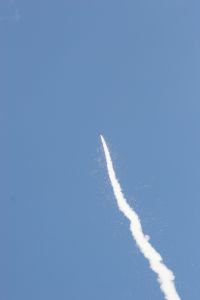
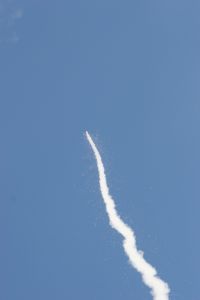
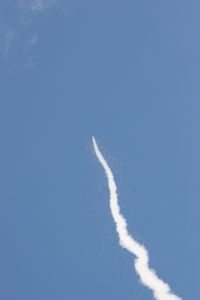
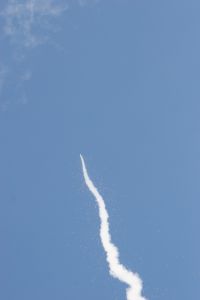
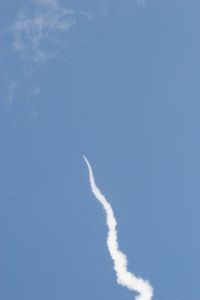
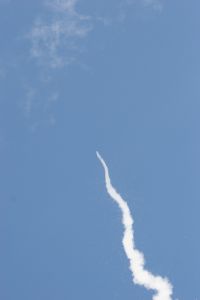
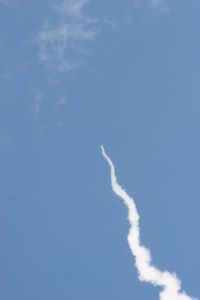
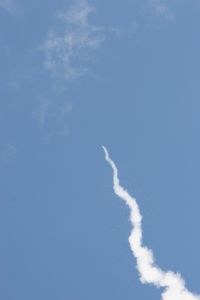
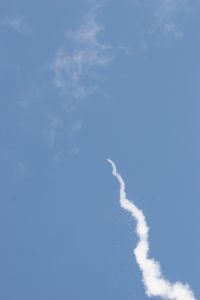
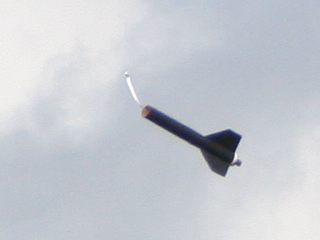
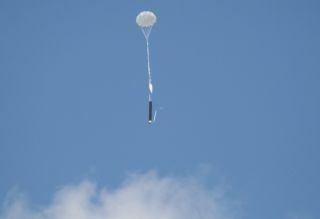
Ignition was a little slow, but better than last time - 1.42 second
ignition lag according to the audio from the video of the video I made
off the little LCD screen of Rick's camcorder. This time I put
two layers of fuse paper at the head end of the grain and one layer
between the grains. There is a 1/4 inch gap between the grains as
well, to allow some flame to circulate, the fuse paper to intercept and
circulate the flame.
The first ignitor failed. It was a big wad of fuse paper wrapped
in green masking tape. I pulled on the wire and it came out, but
the big wad of fuse paper stuck in the nozzle. The copper bridge
wire heated and burned but did not set fire to the fuse paper.
This is the second time this has happened to me out of perhaps a
dozen flights...I realized that the 12 volt automotive batteries used
in this launch system don't make quite as big a spark as the 110vac I
use at home.
So I ran back to the car and made another ignitor as quickly as I
could, this time placing a little black powder next to the bridge wire
before rolling it up and taping it. I ran back to the launch
pad without my skinny pliers so there was no way to pull the first
ignitor wad out, so I just pushed it back to the head end, stuck the
new ignitor in behind it, and hoped for the best. There was a bit
of a delay, and I suspect this was between the new ignitor firing and
the previous one firing shortly thereafter, allowing flame to reach the
head-end.
OK! Now I have the video from Rick, who kindly burned it to DVD for me. Click Here to see the launch (2 meg .wmv file, 12 seconds of video).
Upon ignition there is a little pop, a bit of smoke, then a louder pop and
off she goes! I believe the second pop is the first ignitor wad of
fuse paper finally firing, which passes flame to the forward end of the motor.
Toward the end of the video, we can make out the two parts of the airframe
amidst the curls of smoke. Apparently they separated a bit early. Why?
I don't know. Suggestions are welcomed. But I hope to have another
chance to find out in January.
Jimmy Yawn
jyawn@sfcc.net
Recrystallized Rocketry
rev. 12/6/05


























